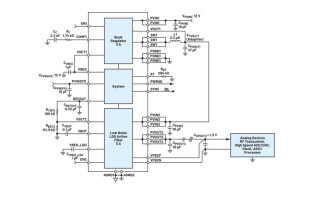Update to MIPI DSI-2 Specification Enables Advancements in Mobile Displays
August 17, 2021
News

The MIPI Alliance announced the next generation of its MIPI Display Serial Interface 2 (MIPI DSI-2) specification. MIPI DSI-2 v2.0 is designed to deliver improvements to the user experience while boosting power savings across application spaces such as mobile, automotive, and gaming.
Per the company, when coupled with the most recent versions of the MIPI C- and D-PHY physical interfaces, the specification offers twice the bandwidth over the previous version.
Specifying the high-bandwidth link between host processors and displays, MIPI DSI-2 is designed to help systems designers deliver the ultra-high-definition (UHD) video experience that their customers seek, while maximizing battery life, and minimizing cost and complexity. Features in the new version enable displays to operate in a variety of use cases, from high-resolution, high-frame-rate video modes (such as 8K with 120 fps), to responsive, low-latency graphical user interface “command” modes, and static modes—for improved display performance at low power consumption. DSI-2 v2.0 is backward compatible with all previous versions of the specification.
A key new feature is a video-to-command mode, which enables displays to transition from immersive video modes of operation to less-intensive command modes for low-frame-rate GUI images. With the increasing popularity of gaming on mobile devices, this allows mobile-phone users, for example, to switch between gaming and other applications with minimal latency and performance impacts, while keeping the device’s power consumption in check.
Similarly, v2.0’s new adaptive refresh panel feature enables a device display to retain images for variable, extended durations without fixed refreshes from the host processor, saving power without requiring a peripheral frame buffer.
The v2.0 update also includes support for the latest VESA Display Stream Compression (VESA DSC) 1.2b and VESA Display Compression-M (VDC-M) 1.2 codecs. By incorporating both codecs, which provide between three to six times data compression while maintaining visually lossless viewing, DSI-2 offers design options to suit a variety of bandwidth and power requirements.
DSI-2 v2.0 can now support more than 6 gigapixels per second of uncompressed image content, based on coupling with the newest MIPI D-PHY v3.0, or MIPI C-PHY v2.0/v2.1 physical layer interfaces. Like its predecessors, DSI-2 v2.0 is highly scalable and flexible—it can support any resolution and can be configured with one or multiple data lanes, ultimately reducing design costs and time to market.
For automotive applications, DSI-2 is a component of MIPI’s Automotive SerDes Solutions (MASS), a standardized connectivity framework built on the MIPI A-PHY SerDes specification for camera, sensor, and display integration. Of particular note is a 2020 study demonstrating that the use of VDC-M in DSI-2 offers a solution to bandwidth challenges created by the growing number of advanced displays in next-generation vehicles.
The MIPI Display Command Set (DCS) specification, which offers a standardized command set for control functions and supply of data to DSI-2 displays, has also been updated to support v2.0.
More information on MIPI DSI-2 can be found in two recent webinars available on demand, “Leveraging Video Compression within MIPI DSI-2 for High-Performance Displays,” and “Enabling Automotive Displays Using MIPI Automotive SerDes Solutions (MASS).” Additional education sessions will be offered later this year.
For more information, please visit www.mipi.org.





